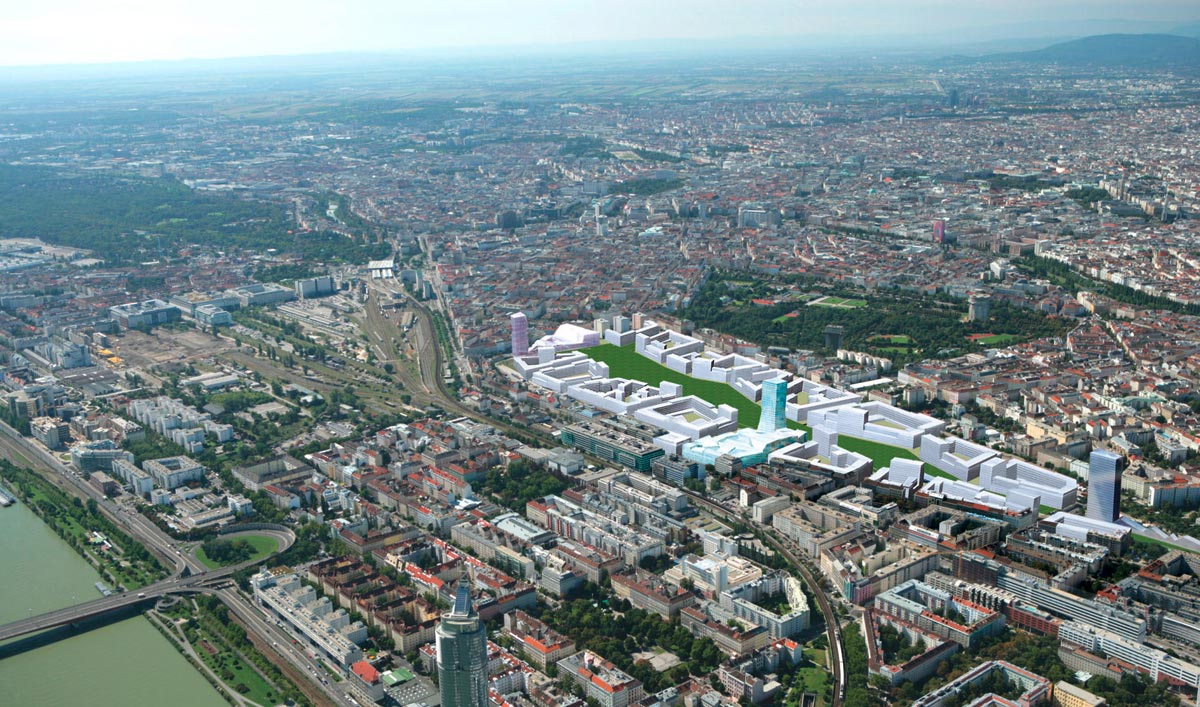Supplying urban districts with locally available energy from renew-ables is a very promising option for the city of the future. In densely built-up urban areas implementing energy strategies involving photovoltaic (PV), solar collectors, geothermal energy, heat pumps and large-scale storage is a complex task. In the Urban pv+geotherm project the Austrian Energy Agency (in collaboration with AEE INTEC, geohydrotherm and Ochsner Wärmepumpen GmbH) has worked out strategies for combining heat pumps (tapping into geothermal energy) with PV and other ways of exploiting renewables to heat and cool an urban development area, so as to maximize energy efficiency and cost-effectiveness. Pioneering storage technologies and building services are part of this approach.
The example of “Nordwestbahnhof Wien”
The investigations were carried out for the Nordwestbahnhof urban development area in Vienna’s 20th district; the experts looked at options for covering this new part of town’s energy needs entirely from locally available renewable sources (independently of district heating or the gas grid). From 2020 on new buildings with a total floor area of 780,000 m2 are due to be put up at Nordwestbahnhof; 68 % of the buildings will be flats, while offices, schools, shops and restaurants make up the remainder. On the basis of an evaluation of geothermal and solar potential and of other renewable sources of energy available on the spot, simulations have been performed for various scenarios.
Results
The idea of an anergy grid with downhole heat exchangers turned out to be particularly advantageous. An anergy grid is a low-temperature grid with temperatures between 8°C and 20°C, with various heat sources and sinks tied into. It was found that all the energy needed can be provided from renewable sources available on the spot. Solar energy (e.g. PVT collectors, which combine PV and solar thermal elements), heat from sewage, outdoor air and waste heat from cooling applications were identified as suitable starting-points. Downhole heat exchangers are not an energy source; instead they bridge the gap (discrepancy) between the supply of and demand for heat.
An ecological audit was carried out to determine the levels of carbon dioxide emitted and of primary energy consumed. In comparison with a system running on natural gas, a scenario combining PVT collectors with downhole heat exchangers on the Nordwestbahnhof site could save 47 GWh of fossil primary energy and 9,500 t of emitted carbon dioxide per annum. The saving of emitted carbon dioxide involves a cost increase of Euro 580,000 per annum as against conventional natural-gas heating (annuity on full-cost basis), so the anergic grid plus PVT collectors involve unit avoidance costs of around Euro 60 per t of carbon
CONTACT
Franz Zach, Austrian Energy Agency
franz.zach@energyagency.at
www.energyagency.at
